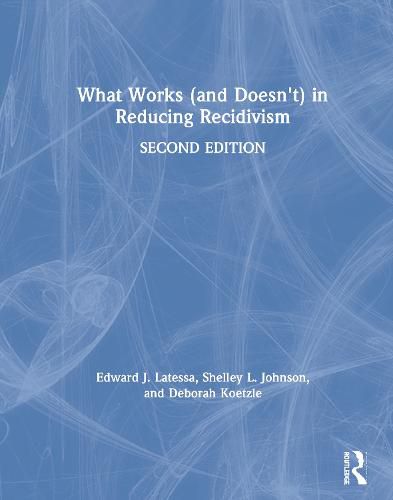Readings Newsletter
Become a Readings Member to make your shopping experience even easier.
Sign in or sign up for free!
You’re not far away from qualifying for FREE standard shipping within Australia
You’ve qualified for FREE standard shipping within Australia
The cart is loading…






What Works (and Doesn’t) in Reducing Recidivism offers criminologists and students an evidence-based discussion of the latest trends in corrections. Experts Latessa, Johnson, and Koetzle translate the research and findings about what works and doesn’t work in reducing recidivism into understandable concepts and terms, presenting them in a way that illustrates the value of research to practice. Over the last several decades, research has clearly shown that rehabilitation efforts can be effective in reducing recidivism among criminal offenders, but it is clear that treatment is not a one-size-fits-all approach. Offenders vary by gender, age, crime type, and/or addictions, to name but a few ways, and these individual needs must be addressed by providers. Finally, issues such as leadership, quality of staff, and evaluation efforts affect the quality and delivery of treatment services.
While other texts have addressed issues regarding treatment in corrections, this text is unique in that it not only discusses the research on what works but also addresses the implementation issues faced as practitioners move from theory to practice, as well as the importance of staff, leadership, and evaluation efforts.
This book synthesizes the vast research for the student interested in correctional rehabilitation as well as for the practitioner working with offenders.
$9.00 standard shipping within Australia
FREE standard shipping within Australia for orders over $100.00
Express & International shipping calculated at checkout
What Works (and Doesn’t) in Reducing Recidivism offers criminologists and students an evidence-based discussion of the latest trends in corrections. Experts Latessa, Johnson, and Koetzle translate the research and findings about what works and doesn’t work in reducing recidivism into understandable concepts and terms, presenting them in a way that illustrates the value of research to practice. Over the last several decades, research has clearly shown that rehabilitation efforts can be effective in reducing recidivism among criminal offenders, but it is clear that treatment is not a one-size-fits-all approach. Offenders vary by gender, age, crime type, and/or addictions, to name but a few ways, and these individual needs must be addressed by providers. Finally, issues such as leadership, quality of staff, and evaluation efforts affect the quality and delivery of treatment services.
While other texts have addressed issues regarding treatment in corrections, this text is unique in that it not only discusses the research on what works but also addresses the implementation issues faced as practitioners move from theory to practice, as well as the importance of staff, leadership, and evaluation efforts.
This book synthesizes the vast research for the student interested in correctional rehabilitation as well as for the practitioner working with offenders.